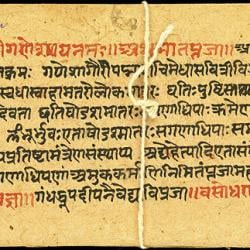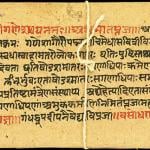So life on Earth was a quirk of fate? Had the meteorite not hit the earth.. it would have been as lifeless as any other corner of the Universe… its like the entire Universe was conspiring for Earth to have life.. right temperature.. right size of sun.. correct material here.. and then just the right size of meteorite carrying the right minerals and correct amounts hits us.. and voila.. life emerges! Man.. are we lucky.. or what? Hope those loser Martians are listenin’ – heck they didnt get the right hits when it mattered.. no wonder they are so wonky and green with envy in our movies!
Meteorites rich in carbon and water fall to Earth once or twice every few decades. But when a truck-size meteorite crashed on frozen Tagish Lake in western Canada in 2000, researchers received a specimen speckled with stardust that promised to offer clues about the chemistry of our early solar system. Now NASA space scientists have isolated organic matter from the Tagish Lake meteorite that is at least as old as the solar system. Such ancient bodies may have delivered the raw materials for life on Earth.
Image: COURTESY OF KEIKO NAKAMURA-MESSENGER/NASA ORGANIC VIEW: Scanning transmission electron microscope image filtered to reveal carbon shows the organic matter (orange) in a piece of the Lake Tagish meteorite.Researchers have tried to study organic matter from meteorites for at least 40 years in hopes of determining if elements key to biotic life came to our planet. Meteorites enter Earth’s atmosphere frozen, the ideal state for chemical investigation. But they usually thaw or become wet or contaminated before they can be preserved, increasing the risk of terrestrial contamination. Scientists value the Tagish Lake meteorite because it fell on a remote icy lake and was carefully handled.
Keiko Nakamura-Messenger and her colleagues at NASA’s Johnson Space Center found the organic matter by scanning thin sections of the meteorite with a transmission electron microscope and using advanced analytical techniques. Similar to particles found in comets, the submicroscopic globules in the Tagish Lake meteorite proved to consist predominantly of carbon, hydrogen, nitrogen and oxygen. The ratios of the nitrogen and hydrogen isotopes in the hollow globules, measured with a spectrometer, indicate the “organics are completely indigenous to the meteorite” and did not come from Earth contamination, according to team member Michael Zolensky.
The isotope composition also provides evidence that the globules formed at near-absolute zero. This type of “exotic environment,” team member Scott Messenger says, never existed in the region of the solar system where Earth formed or near the asteroid belt; these cold temperatures, however, do persist in its outer reaches, the so-called Kuiper belt, and beyond. The globule’s rare isotope composition and the presence of particles from other stars that managed to survive the chaotic environment of the early solar system indicate the organic matter likely originated in the cold molecular cloud that gave birth to the planets.
Nakamura-Messenger suggests in the study that appears in the December 9 issue of Science that the globules initially formed as organic ice grains whose exteriors were chemically converted to more refractory compounds when hit with radiation. The shell initially protected the globule ice core from ultraviolet light, but the center later evaporated, leaving a hollow sphere of organic matter. Alternatively, the globules could have originated as icy grains that were exposed to the alkaline solutions in the Tagish Lake meteorite’s parent asteroid, hollowing out the center. In either case, the globules formed floating freely in the outskirts of our solar system. Zolensky says they are “a possible habitat to protect and shield organic chemistry.” He adds that because these meteorites presumably fell on the early Earth, they may have delivered the globular “building blocks toward life.”
“We’re sure that these [globules] are not alive,” Messenger remarks. “But they may have been important ingredients for the first life-forms.”















